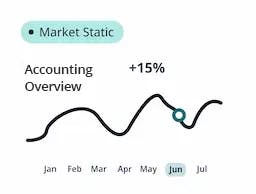
Morgan
2025-07-28

Oman’s Workforce Is Entering a New Phase
Across Oman, something is happening. Yes, it’s quiet, but you can still feel the shift. Talent is becoming the top priority here. Businesses are now rethinking how they hire, Ministries are rewriting the expectations, and the workforce is catching up fast by itself, because Vision 2040 is setting the tone. Beyond just an HR challenge, it’s become a national focus.
You can’t talk about long-term economic growth anymore without talking about local talent, not in Oman at least. Because it’s all about building future capability.
That’s why Tech Mahindra is catching attention in Muscat. Here’s the catch: Tech Mahindra is in headlines not because of what it offers, but for whom it’s built. It’s for Omani youth, local engineers, and an entire generation that&pos;s ready to work in the region’s fastest-growing sectors.
What Does Tech Mahindra Do?
Tech Mahindra is part of the Mahindra Group, a massive global entity that covers everything from IT to engineering. The company runs operations in 90+ countries across telecom, energy, banking, manufacturing, and public sectors.
In detail, they help businesses move into the digital space with services in 5G, cloud, artificial intelligence, analytics, automation, and enterprise IT.
But here in Oman, their focus is narrow and deep. They want to develop an entire digital workforce. This isn’t a technological project, it’s a people strategy. So they’re transferring knowledge, investing in people, and setting up long-term roots through R&D and training.
Why This Matters to HR Professionals in Oman
Most HR teams in Oman already know the challenge. Skilled local talent in tech is limited, not due to a lack of interest, but due to a lack of deep exposure.
You definitely can’t expect a junior developer to master cloud systems or AI modules without proper training and mentoring. And importing talent from outside can only be a temporary solution, but it doesn’t scale, become expensive, and doesn’t align with Oman’s long-term goals.
Now, Oman is prioritizing its own talent, and companies are expected to do the same. That’s where Tech Mahindra’s model changes the conversation for HR departments across industries.
The Muscat Centre: A Talent-Building Facility
You can think of Tech Mahindra’s new Innovation & Technology Development Centre as a launchpad, more than just a workspace. The facility fully focuses on core digital skills, including artificial intelligence, cloud platforms, 5G, cybersecurity, and other automation systems. But its actual goal goes beyond implementation. It’s about training a local workforce who can later deliver those technologies across sectors, both locally and globally. The centre is being built around collaboration, with universities, the Ministry of Transport, Communications and Information Technology, and with emerging tech professionals, which makes it a talent-building ecosystem.
Contact us?
If the Muscat centre is the body, then the Makers lab is the brain. Yes, Tech Mahindra is setting up its in-house R&D unit. This is where most of the technical upskilling happens. Omanis will work on actual use cases, prototype new solutions, and learn from experts in advanced fields like AI, Automation, and edge computing.
Recruitment Gets Both Stronger And Faster
Every Human Resource Management team in Oman dealing with hiring in tech, telecom, banking, or government is well aware of the challenge. Finding skilled local talent with proper digital capabilities is hard. So, for them, there’s a clear benefit.
Tech Mahindra’s initiative takes away a key pain point: access to job-ready, locally trained talent in digital domains.
Here’s what that changes on the ground:
Faster Hiring Cycles
You don’t need to wait for qualified profiles to appear out of thin air. This setup produces a steady stream of skilled candidates who understand both the tech and the regional context.
Lower Onboarding Friction
With exposure to real projects, these candidates won’t need hand-holding during onboarding. That reduces internal training loads and helps teams scale smoothly.
Better Alignment With National Targets
Hiring locally trained Omanis, especially those involved in national capacity-building programs, positions companies favorably, both in terms of compliance and public image.
Aligned With National Strategy
This model supports Vision 2040 directly. So companies hiring from this pool are also aligning with national development goals. That matters for compliance and credibility.
What Upskilling & Reskilling Looks Like in Practice
You may wonder what upskilling & reskilling actually is. Here’s your answer.
Upskilling means you can learn new skills to do your current job better or to grow in your career. It’s like adding more tools to your toolbox so you can work faster, smarter, or take on bigger tasks.
Reskilling is a little different than upskilling. It means learning completely new skills so you can do a different job or switch to a different career.
Here’s what Tech Mahindra is actually doing:
- They are collaborating with local institutions to identify and train young professionals.
- Apart from that, Tech Mahindra is running multiple on-ground projects in areas including data analysis, AI, cloud, and cybersecurity.
- They are providing practical exposure, so learners aren’t just trained, they’re experienced.
- Also, offering support from global experts while keeping execution local.
This model produces professionals who know how to work with enterprise platforms, not just pass training modules.
Oman Vision 2040 in Action
You’ve probably heard the phrase “Oman Vision 2040” more times than you can count. Vision 2040 isn’t just a governmental target. It’s something companies are expected to support, directly and measurably.
Tech Mahindra’s project supports several key pillars of the vision by:
- Enabling national job creation in high-demand sectors.
- Reducing skills gaps in AI, cloud, and digital services.
- Building local delivery capability for regional and international projects.
So for HR Management teams, aligning with this kind of model strengthens the company’s public position, compliance posture, and long-term workforce strategy.
The Opportunity Ahead for HR Teams in Oman
Tech Mahindra’s initiative offers a model, but it’s up to the broader HR community to use it.
Here’s what HR managers can do right now:
Engage with the ecosystem: Reach out to local centres, training providers, and government programs. See where your hiring needs intersect with their training pipelines.
Strengthen internal mentoring: If you’re hiring young talent, pair them with senior staff who can guide and accelerate their development.
Design smart retention plans: Skill-building is great, but only if you can keep the people you train. Focus on career pathing, growth visibility, and real engagement.
Track success with metrics: Start measuring internal upskilling impact. Look at productivity, project speed, and talent retention. That data helps shape future planning.
As a result, the benefit to Oman is long-term and the benefit to employers is immediate.
So this isn’t a nice-to-have moment for HR. It’s a defining one. Talent will always be the deciding factor. And right now, Oman is showing that its people are more than ready, as long as the right systems are in place.
Latest News
From Our blog and Event fanpage




